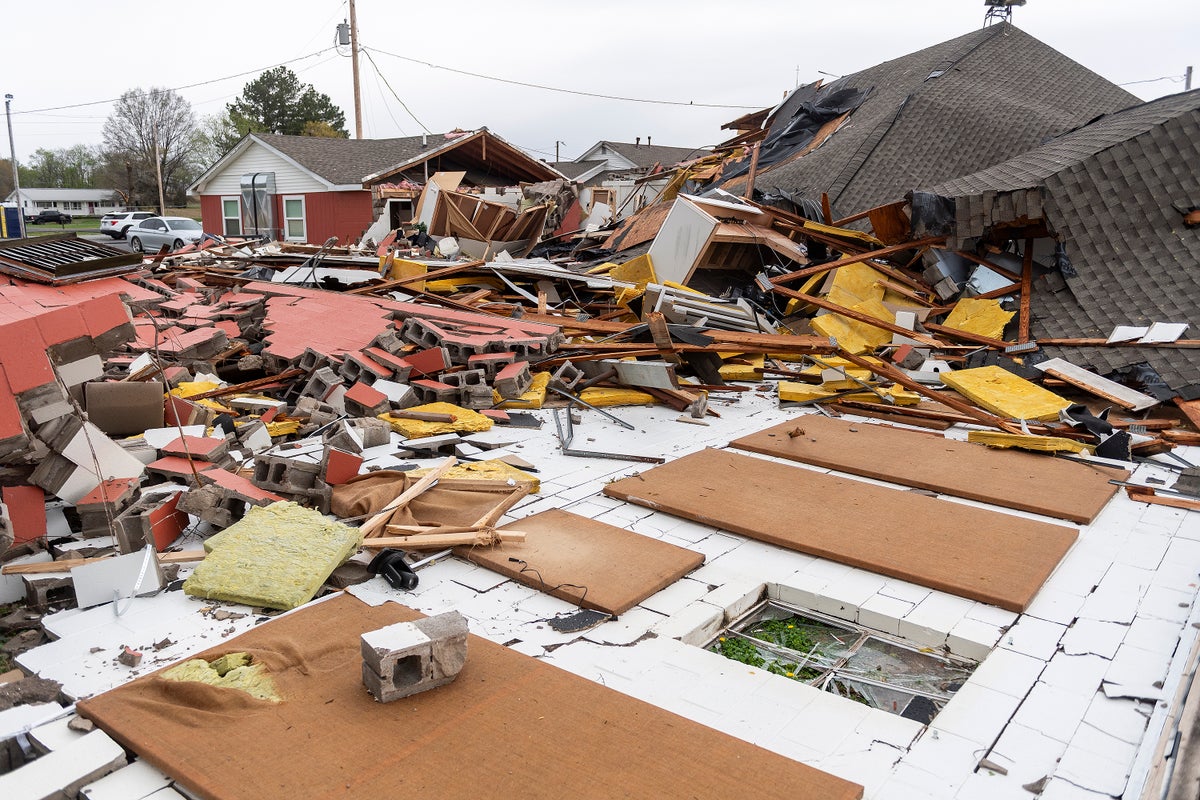
The U.S. National Weather Service forecasts tornado outbreaks—often days in advance—and issues the watches and warnings that help people know when and how to prepare and when to take cover. NWS researchers also perform another task that is less recognized but crucial: conducting damage surveys in the wake of tornadoes such as those that struck parts of Arkansas, Tennessee, Kentucky and Indiana this week.
To learn more about why these surveys of the devastation wrought by tornadoes is so important, Scientific American spoke with tornado researcher Jana Houser of the Ohio State University.
[An edited transcript of the interview follows.]
On supporting science journalism
If you’re enjoying this article, consider supporting our award-winning journalism by subscribing. By purchasing a subscription you are helping to ensure the future of impactful stories about the discoveries and ideas shaping our world today.
Why do researchers conduct damage surveys after a tornado hits?
The biggest reason is to develop a climatological database for when tornadoes are occurring, where tornadoes are occurring and how intense tornadoes are.
With a hurricane, you send a hurricane hunter aircraft in the air, and it drops an instrument package called a dropsonde through the hurricane. That instrument, as it is descending, acquires information about the temperature, the pressure, the winds, the moisture, etcetera. And those wind measurements are what we use to understand how intense the hurricane is.
Tornadoes pose a challenge with this type of technique because they’re very small. They’re also very intense, and they’re very difficult to predict. And oftentimes they don’t occur anywhere where we could even put an instrument in it in the first place. So the best way we have available to us to determine how intense tornadoes are is looking at how much damage is caused by the tornado after the fact.
A lot of people try to argue, “Well, why don’t we use radars, for example, to look at tornadoes?” And the biggest problem with radars is the distance between the radar and the tornado. Also, where the radar is actually measuring in the tornado is not at the ground—it tends to be very high. And there’s not a standard height that we can always get information at, so we cannot compare apples to apples by using radar data.
What does a damage survey involve?
When you actually go to perform a damage survey, the first thing we want to do is figure out where the tornado started causing damage in the first place. So you want to establish a start point, and that is typically informed—at least as kind of a first-order guess—by radar data.
“I’ve seen bits of straw stuck into the concrete berms of sidewalks.” —Jana Houser, tornado researcher
We have a list of 28 damage indicators, where we have very specific types of buildings and other objects. This is going to be, like, a hospital or a house or a gas station with an awning or a hardwood tree or a softwood tree. Meteorologists have worked intimately with civil engineers and wind engineers, using wind tunnels and tornado simulators and all of this fancy stuff, to really figure out, like, “How much wind does it actually take to suck a roof off of a house?” So [the amount of damage to] each one of those objects has a wind speed category associated with it [on the Enhanced Fujita (EF) scale]: EF1, EF2, EF3, etcetera. We use what we know about the damage incurred to back calculate the winds. We put all the various pieces together at the end of the day, and the rating assigned to a tornado is based on the most intense damage across the entire path of the tornado.
Can you tell us about some of your experiences with damage surveys?
I’ve seen some interesting and kind of frankly gruesome things with these. I think some of the most memorable moments were after the Greensburg, Kan., tornado in May 2007. That was the very first EF5 tornado of the whole new EF scale that happened in 2007 [when it replaced the former Fujita scale].
That was my first real experience with catastrophic tornado damage. The town was just leveled—like, 90 percent of the town just was wiped off the map. There were buildings where the slabs were just basically bare. There was a fire hydrant—I will never forget this—this fire hydrant was literally sucked out of the ground with, I don’t know, at least six feet of pipe. And nothing was bent—it was, like, perfectly straight. That just speaks to the intensity of the vertical winds that happen. You don’t just have horizontal winds in a tornado.
And I’ve seen road scouring—this is when the tornado basically sucks pavement up off of roads. And I’ve seen bits of straw stuck into the concrete berms of sidewalks. When you make that into a projectile that’s moving 200-plus miles per hour, it has enough impact to literally stick into the side of a curb.
If meteorologists can’t get out right away to do a survey, or can’t do so at all, can they use photographs?
It all depends on the quality of the photograph and what the photographer knows or doesn’t know about damage surveys. If you have someone out there who knows what they’re looking for and is zooming in on, for example, the connections between floor joists and the foundation [which can tell them how much wind a structure should be able to withstand], you can get a pretty good feeling for the damage.
The challenge with photographs is that they’re point sources. You’re not necessarily guaranteeing full time-space coverage, unless they’re really doing thousands and thousands of pictures from different angles.
And then, obviously, the challenge with not getting a damage survey crew out immediately is that people start cleaning up immediately, muddying the waters a little bit.
How crucial is it to always do these surveys?
Damage surveys are critically important to informing our U.S. tornado climatology. If we stop having the ability to go out and actually do damage surveys consistently, that is going to throw off our whole understanding of what’s happening with tornadoes in time.
We could get a false sense that there are fewer tornadoes because we don’t have crews that are actually going out to survey some of these weaker tornadoes. Or, if offices are pressed for time, we might end up actually getting inaccurate EF scale ratings because they are short-staffed and are dealing with limited resources.
This, then, has implications on the big question that everybody wants to know, which is: How are tornadoes changing in a world of a changing climate? If we don’t have adequate data, we can’t answer that question accurately.
